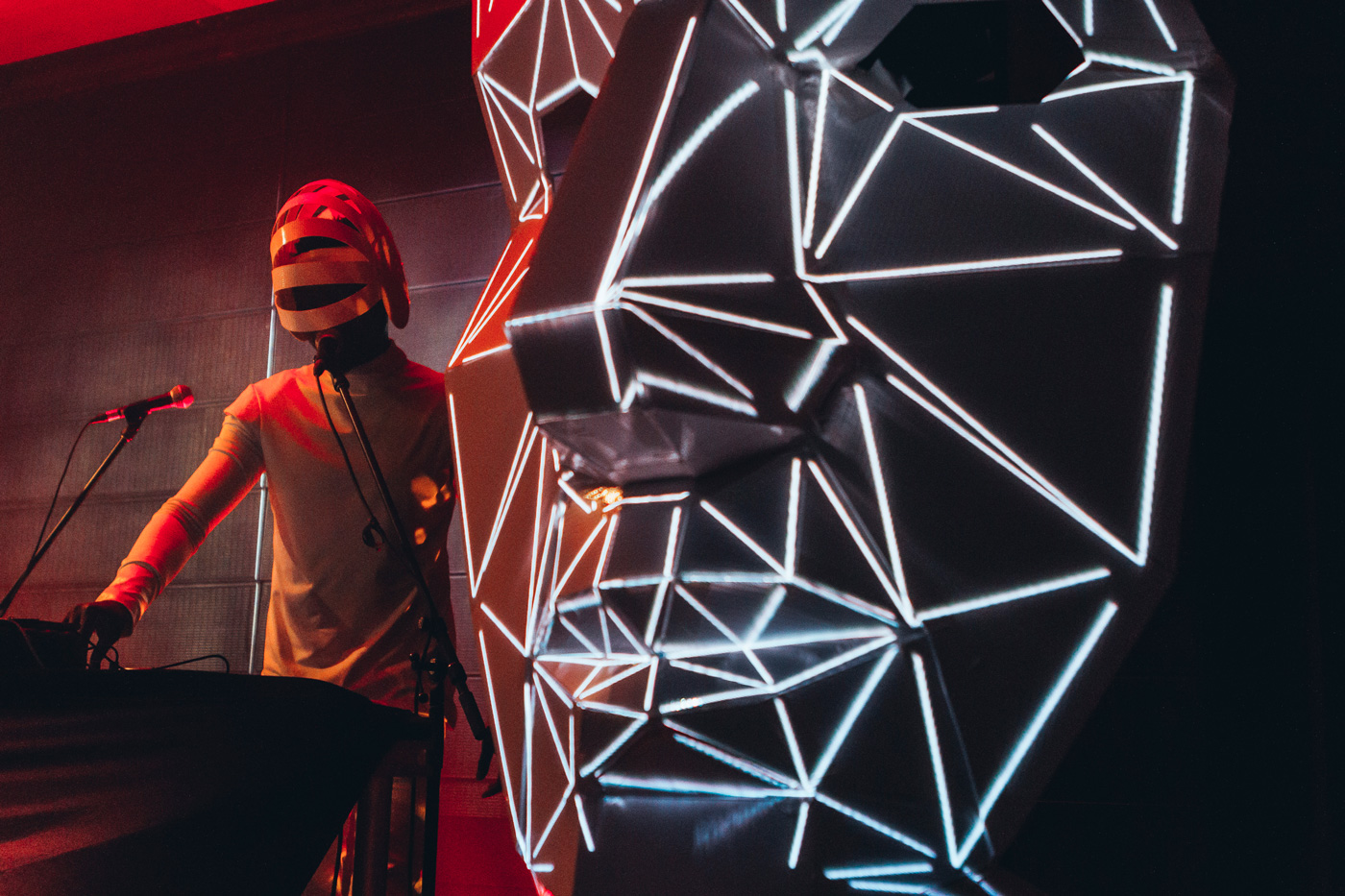Last Friday October 20, AfrotroniX performed at Phi Centre, and I had the chance to attend this wonderful event.
Founded by the renowned Chadian guitarist Caleb Rimtobaye, AfrotroniX first performed during last year’s edition of AFROPUNK Paris, which is a festival centered around afro-punk music. AfrotroniX’s art, including music and dance, consists of an exquisite fusion between the traditional and the modern. The group’s goal is to redefine the meaning of Afrobeat while presenting “a new Africa,” which they accomplish by mixing African rhythms, Tuareg blues from Sahara, and Mandingo music from West Africa with electronic music.
L.Teez., based in Tio’tia:ke (also known as Montreal), is a young rapper who opened the set. His performance was dynamic, textually brilliant and filled with emotions; his musicality and rapping skills blew the audience away.
The group’s goal is to redefine the meaning of Afrobeat while presenting “a new Africa.”
After this introduction, AfrotroniX started its set in front of approximately 150 amazed people. I was taken by surprise by the ingenuity with which the musical formation blended tradition and modernity by utilizing various artistic mediums. In their song “Sinon le pays va tomber” (Otherwise the country will fall), traditional chants were smoothly mixed with the furious rhythms of Afrobeat, creating groovy music that made the audience dance furiously.
Throughout AfrotroniX’s entire set, three dancers performed traditional dances on the furious and captivating rhythms of a renewed Afrobeat. Staring down at the audience, the dancers hypnotized the attendees with their sharp and smooth movements. Occasionally, a third AfrotroniX member would join the two others on stage with his djembe, and set fire to the scene by performing beats that I did not think were humanly possible. The visual spectacle was equally stunning. Various images and mini-clips we’re projected—some showed people dancing, and others showed stylized sequences of sound wave patterns.
Toward the end of their set, AfrotroniX invited Senegalese singer and songwriter Seydina to perform various songs he wrote for his soon-to-be-released debut album. During this part of the performance, Seydina made the attendees sing, charming them with his impressive stage presence and voice. Seydina contributed to AfrotroniX’s project of representing the strong cultural bond linking countries of the African continent while giving place for its diverse voices to speak up.
Seydina [one of Afrotronix’ guest singers] contributed to AfrotroniX’s project of representing the strong cultural bond linking countries of the African continent while giving place for its diverse voices to speak up.
AfrotroniX used art in order to make a strong statement and to present a “new Africa” while demystifying its current misrepresentations. Between the two parts of their set, the musicians played an instrumental while creator Caleb Rimtobaye addressed the audience and discussed the distorted ways in which the African continent is perceived in Western societies. Rimtobaye ridiculed popular stereotypes such as that all Africans allegedly look at pieces of wood and worship them. After showing the absurdity of such a belief, Rimtobaye continued by stating that it was time for the African continent to be given its rightful image, and proposed his afro-futurist project in the visual and musical clashing of past and present. Caleb Rimtobaye’s speech was warmly received, and on the cheers of the audience, AfrotroniX proceeded to realize Rimtobaye’s words and afro-futuristic promise.
Rimtobaye [stated] that it was time for the African continent to be given its rightful image, and proposed his afro-futurist project in the visual and musical clashing of past and present.
AfrotroniX’s performance resonated with Afro-Canadians in the room while educating people who were not aware of how distorted their views surrounding the African continent were. As a Canadian born to Haitian parents, I particularly related to AfrotroniX’s message. Western perceptions of Africa and Haiti are similarly distorted. When I was younger, I remember being told by several of my teachers and peers that Haiti was and had always been a poor country. However, as I started doing some research and frequently asking my parents what their motherland was like, I realized how disconnected though prevailing this perception of Haiti was. In fact, as explained by Roger Annis in a letter to The Daily, Haiti’s present state is the result of centuries of imperialism, enslavement, coups, uprisings, liberations and neo-colonial indebting, caused by Western powers, including Canada. Haiti, like many other colonised countries, was and has been culturally and historically vibrant, but has been misconstrued through colonial violence and erasure In debunking myths surrounding Africa, AfrotroniX managed to relate to every people whose motherlands and/or parents’ motherland are similarly othered and misrepresented.
Afrotronix managed to give the African continent its rightful image in the space of three hours using various art forms, and it was simply wonderful.

